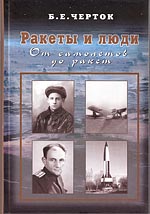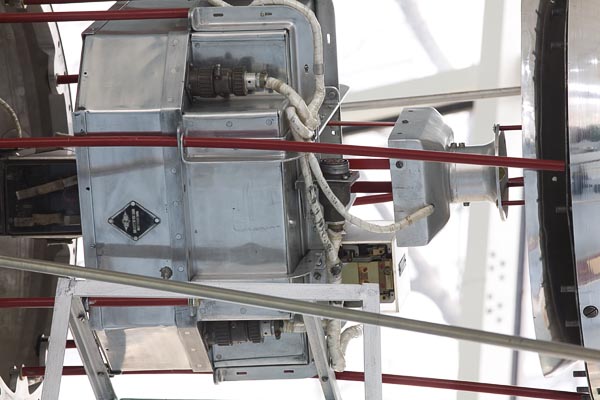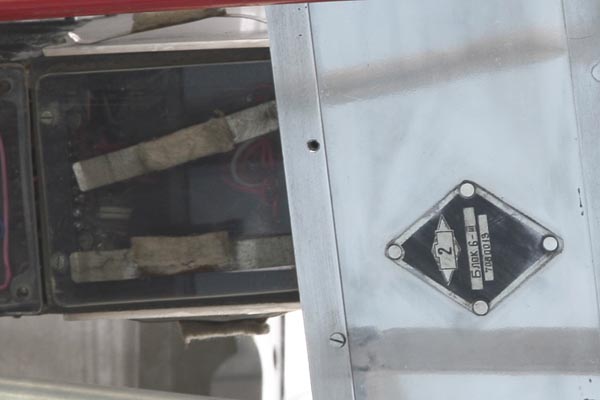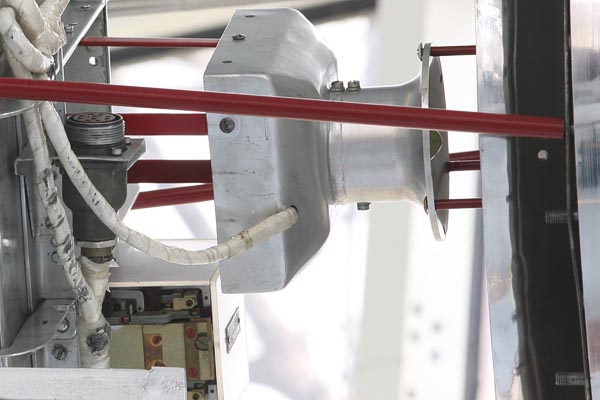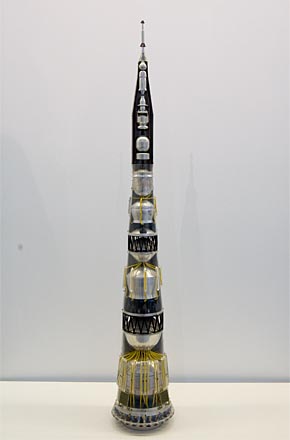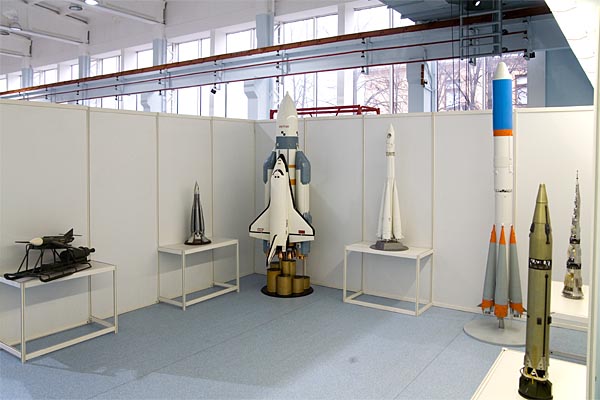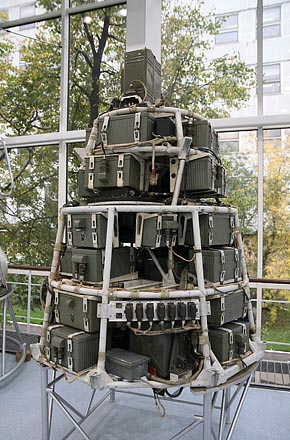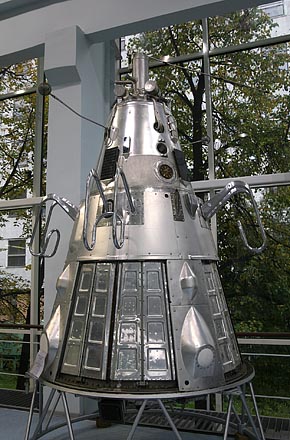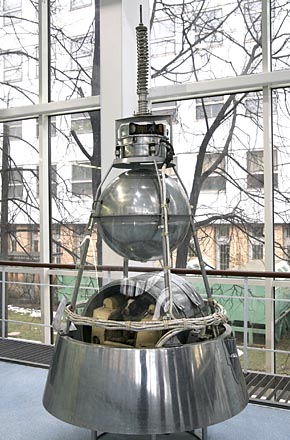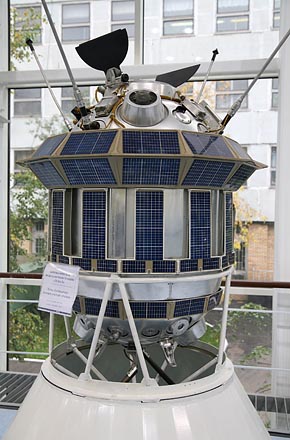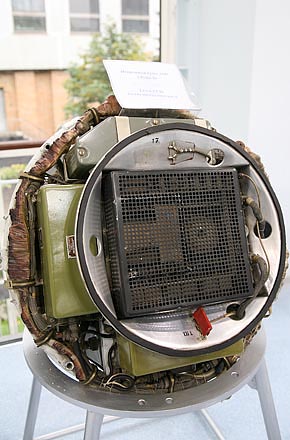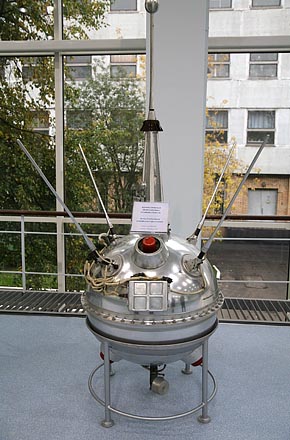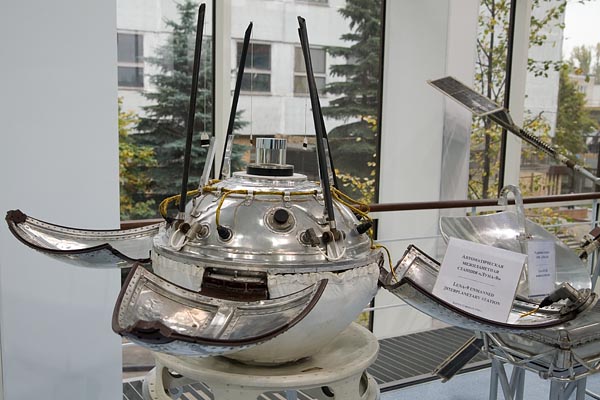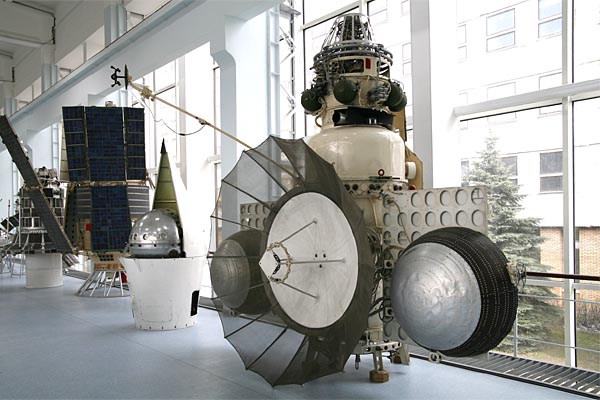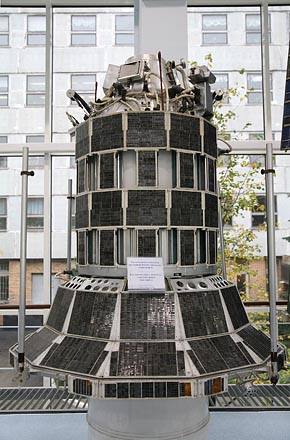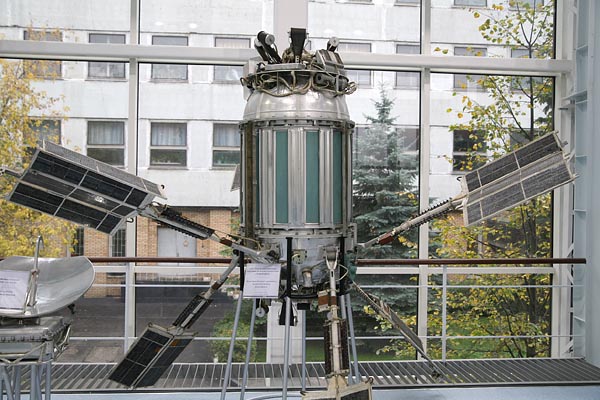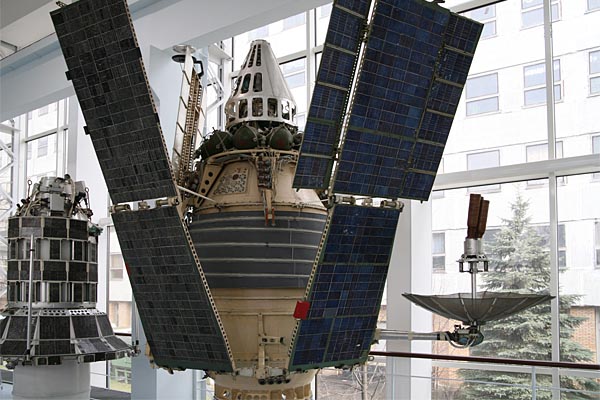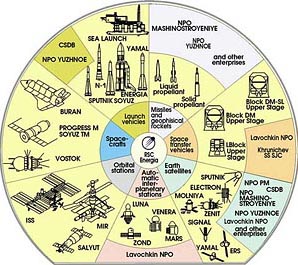Energia Museum50th Anniversary of Sputnik-1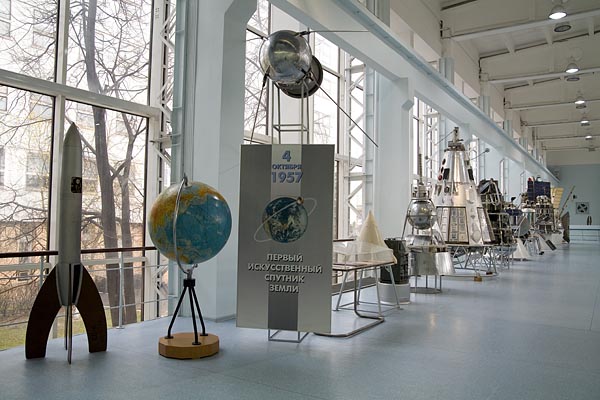 Sputnik-1 : the world's first satellite (exploded view) Launch: October 4,1957, Mass: 83.6kgSputnik-1 was pressurized (filled with nitrogen) in a spheric container with the diameter of 580 mm.2007-04 (C) Seiji YoshimotoVarious Kinds of satellites that achieved "the world's first missions" in the exhibition hall2007-04 (C) Seiji YoshimotoElectric circuits of Radio transmitter D-200 (center), and thermal switches of thermal control system DTK-34 (top and bottom).2007-04 (C) Seiji Yoshimoto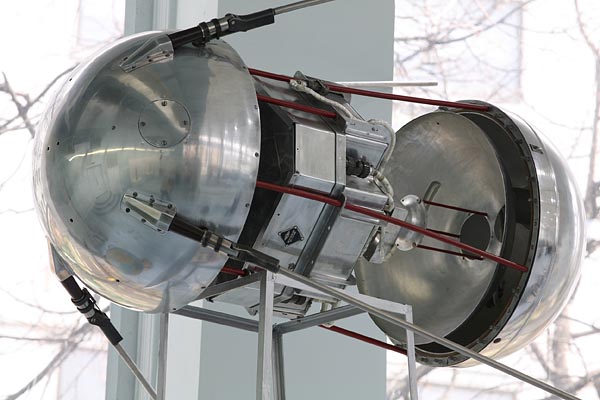 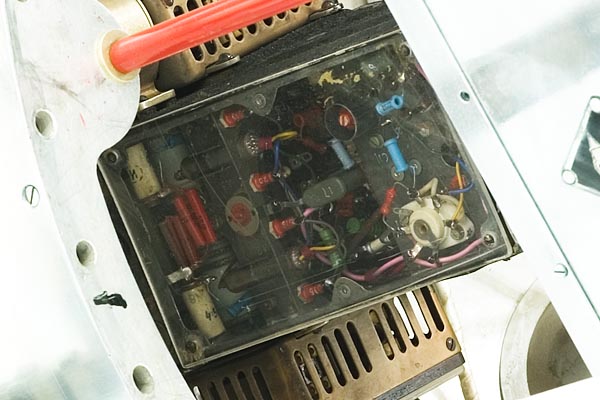 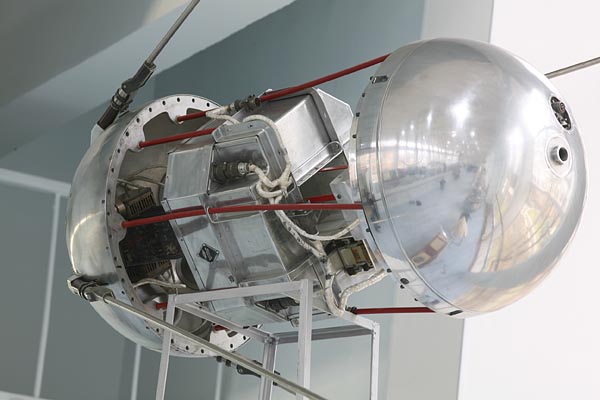 Sputnik-1, viewed from bottom
|
Energia Museumis one of the most important space museums in the world. The exhibitions here have significant historical values including a real Vostok-1 descent module returned to the earth after the world's first manned space flight by Yuri. A. Gagarin.
RSC Energia took the leadership of almost all the space development activities of early stage in Soviet Union under S. P. Korelov. RSC Energia developed not only rockets but also various satellites including Sputnik-1, the world's first satellite. As a museum within RSC Energia, many of the satellite models exhibited here are not simple "mock-ups" but proto models, development models, engineering models or even flight spares.
RSC Energia's "Word's Firsts in Satellite"Courtesy of RSC Energia
|
|||||||||||||||||||||||
Space Museum |
Energia |
Zvezda |
Korolev |
Dnepropetrovsk |
Collectspace.com:
Various Sputnik-1 models in the world are introduced at :
http://collectspace.com/top10sputniks
http://collectspace.com/news/news-100307a.html
NASA Sputnik:
http://history.nasa.gov/sputnik/index.html
YouTube video:
R-7 and Sputnik Launches
The radio transmitter as well as other components of the Sputnik-1 model here are said to be flight spares, and its electronic circuits show the radio technology in Russia 50 years ago.
Sputnik-1
the world's first satellite, was packaged in a two semispheric containers with the diameter of 580 mm. Its structure was made of 2mm thick aluminum and connected by 36 bolts using O-ring seal. Satellite mass was 83.6kg. The satellite carried the followings:
-
Radio transmitters D-200 transmitting signals "beep beep beep" lasting 0.4 seconds at frequencies of 20 and 40 MHz.
-
Power supply made of three silver-zinc batteries .
-
Thermal control system composed of thermal control switches and a ventilation fan.
-
Two sets of antennas: one with two 2.4-meter elements, another two 3.9 meter elements.
Sputonik-1 was launched by R-7 rocket from Baikonur Cosmodrome at 22:28 of October 4th, 1957 (Moscow time), and was said to be injected into an orbit of perigee 228 km and apogee 947 km with an inclination of 65.1 degrees.
The Sputnik-1 transmitted signals for 22 days before its batteries went out. The satellite circled 1,440 orbits and re-entered into the Earth's atmosphere on January 4, 1958, 92 days in space after launch.
Although the Sputonik-1 was a very simple satellite, the following scientific data was obtained:
-
Density of the upper atmosphere from the rate of decay of its orbit,
-
Radio wave propagation through the ionosphere.
The success of the Sputnik-1 provided dreams of Space to many people all over the world, and the Space Age started with the Sputnik-1. At the same time it also shocked the United States that the USSR can strike the US territory with nuclear weapons by ballistic missiles.
The museum has three exhibition area: a large exhibition hall, the Labour Glory hall and the Memorial Room devoted to S.P. Korolev.
Russia |
Moscow |
St. Petersburg |
Zheleznogorsk |
Yasny |
Baikonur |
Ukraine |
Kiev |
Dnepropetrovsk |
Odessa |
Eupatoria |
Japan |
Tokyo |
Yokohama |
Kyoto |
Kamakura |
Nikko |
Himeji |
Vostok Spacecraft
Voskhod Spacecraft
Various present and futur space programs of RSC Energia
2007-04 (C) Seiji Yoshimoto
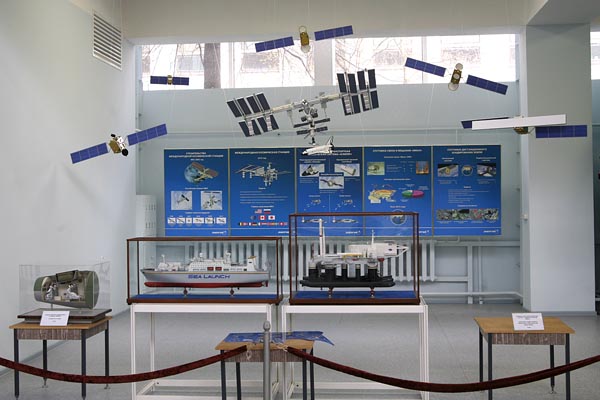
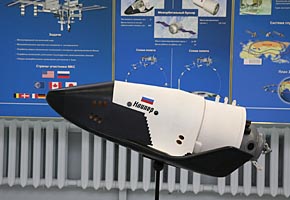
Kliper space shuttle proposed by RSC Energia
2007-03(C) Seiji Yoshimoto
Present and Future Space Programs of RSC Energia
Orbital Station
Docking adapter
2007-03 (C) Seiji Yoshimoto
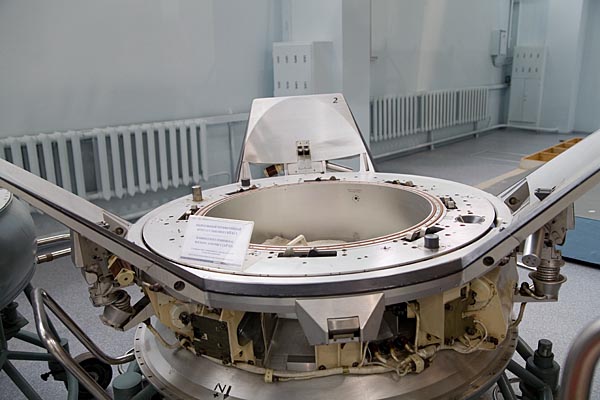
Interior of Full-scale Salyut orbital station
2006-10 (C) Seiji Yoshimoto
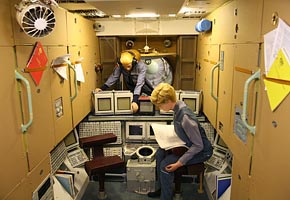
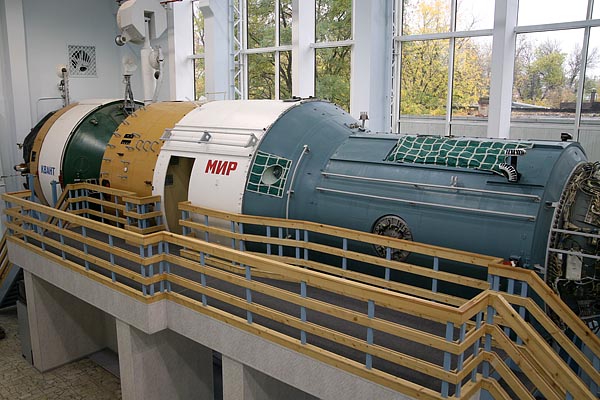
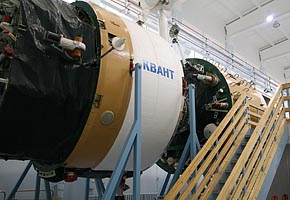
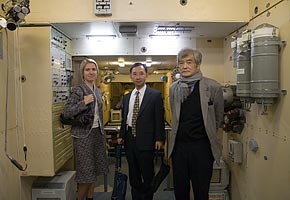
Full-scale mock-up of the Salyut orbital station
2006-10 (C) Seiji Yoshimoto
Kvant astrophysical module
2006-10 (C) Seiji Yoshimoto
Transitive compartment with docking ports
2006-10 (C) Seiji Yoshimoto
Interior of Full-scale Salyut orbital station
2006-10 (C) Seiji Yoshimoto
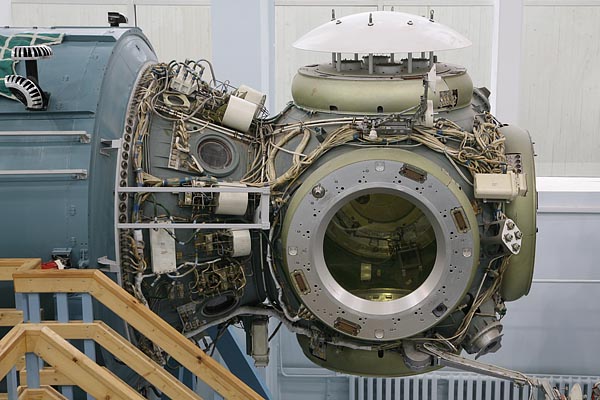
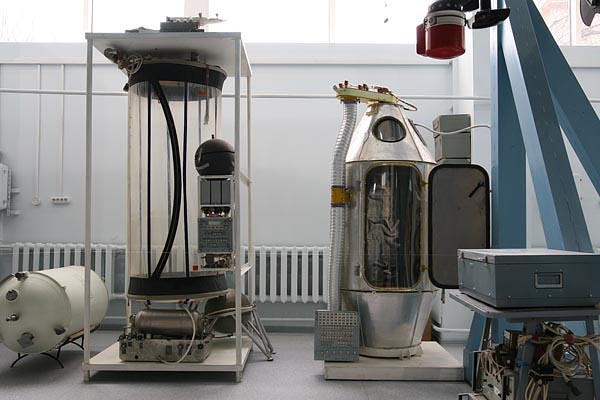
Russian style showers in orbital stations
2007-04 (C) Seiji Yoshimoto
Unmanned Vostok Spacecraft
2007-03 (C) Seiji Yoshimoto
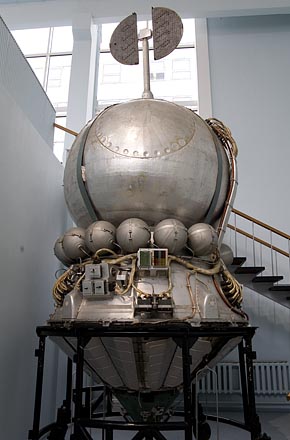
Descent module of Vostok -1, the world's first manned flight by Yuri Gagarin
2007-04 (C) Seiji Yoshimoto

Descent module of Vostok -1
2006-10 (C) Seiji Yoshimoto
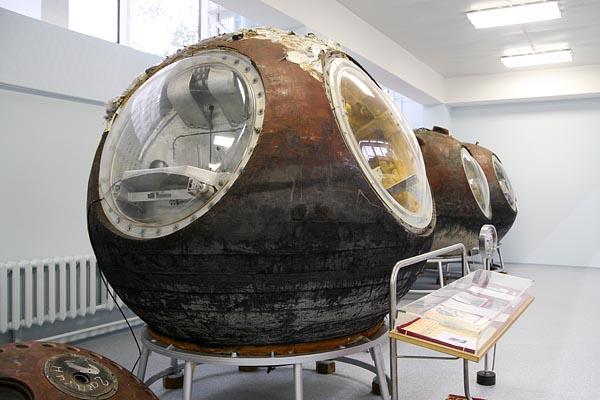
Descent module of Vostok -1, viewd from left
2006-10 (C) Seiji Yoshimoto
Descent module of Vostok -6 (center) and catapult armchair of Tereshkova (right)
2006-10 (C) Seiji Yoshimoto
Descent modules of Vostok used for unmanned test flight before Gagarin
2006-10 (C) Seiji Yoshimoto
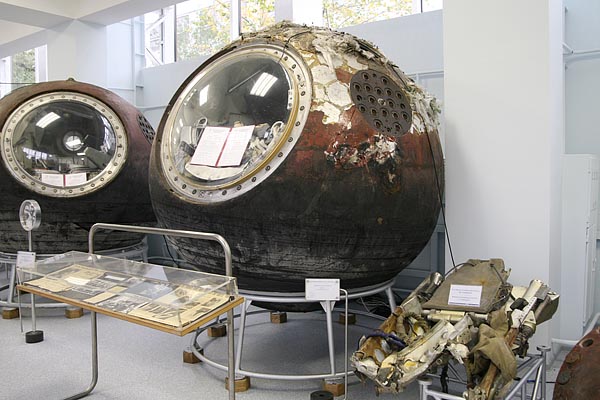
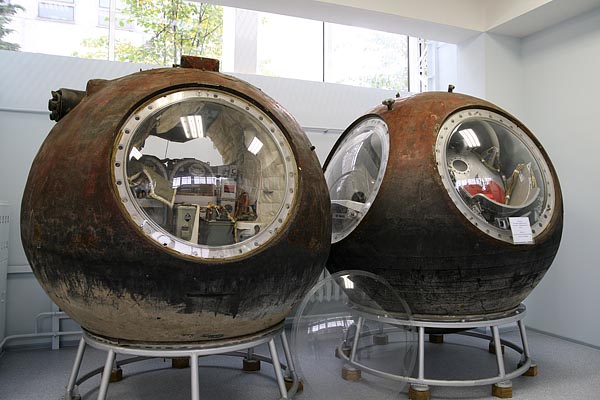
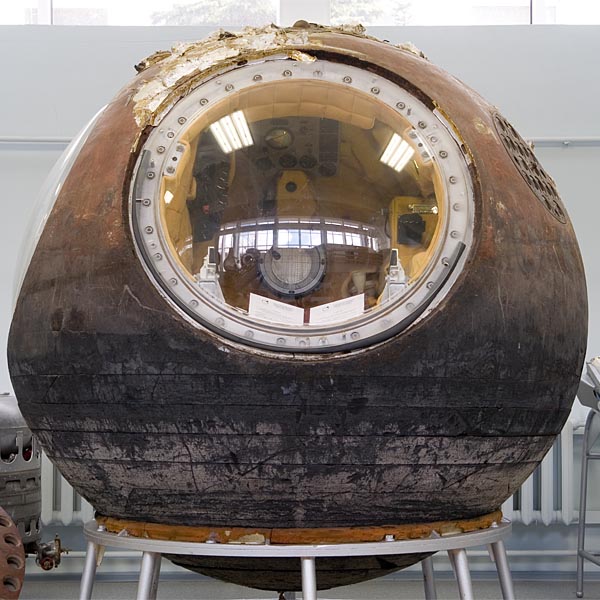
Orbital module of Soyuz-22
2007-04 (C) Seiji Yoshimoto
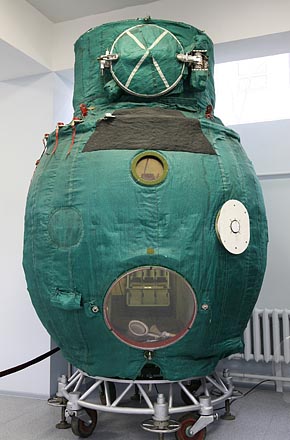
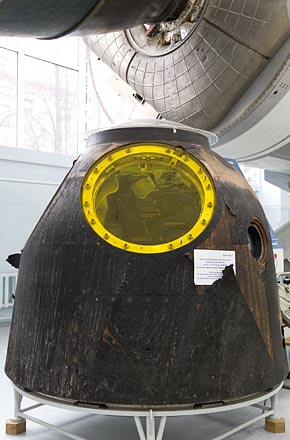
Descent module of Soyuz-TM14
2007-04 (C) Seiji Yoshimoto
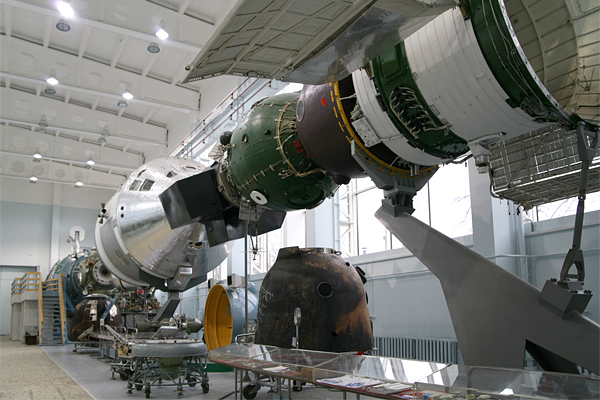
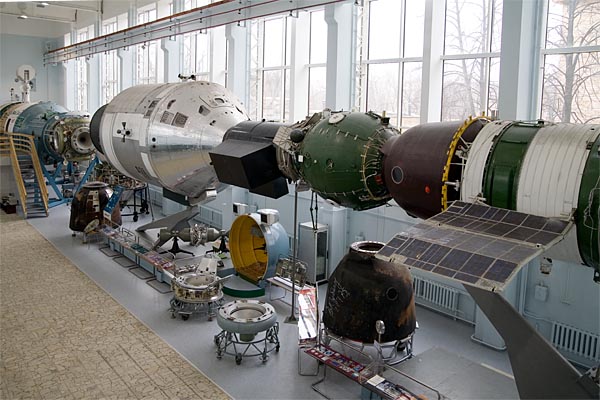
Full-scale mock-up of the Soyuz-Apollo first international flight
2007-04 (C) Seiji Yoshimoto
Full-scale mock-up of the Soyuz-Apollo first international flight
2007-04 (C) Seiji Yoshimoto
Descent modules of Zond-5 (left) and Soyuz-3 (right)
2006-10 (C) Seiji Yoshimoto
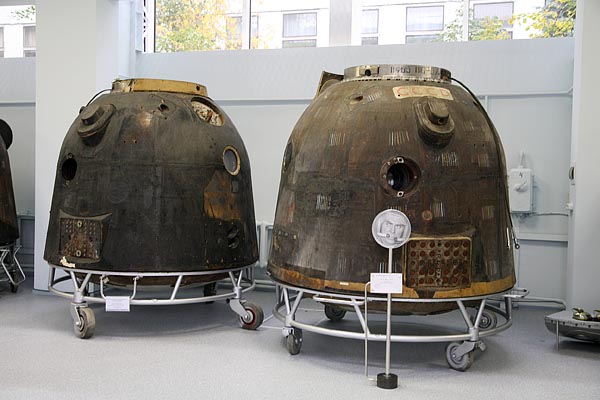
Interior of descent module of Soyuz T-3
2007-04 (C) Seiji Yoshimoto
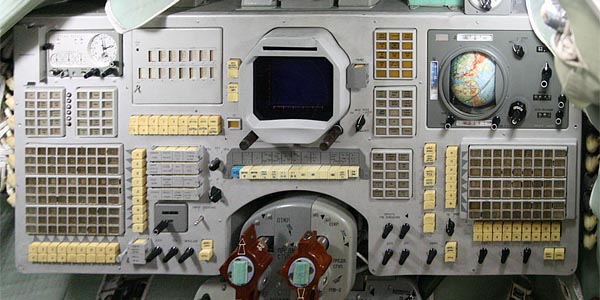
Interior of descent module of Soyuz T-3 (This photo is geometry corrected by computer)
2006-10 (C) Seiji Yoshimoto
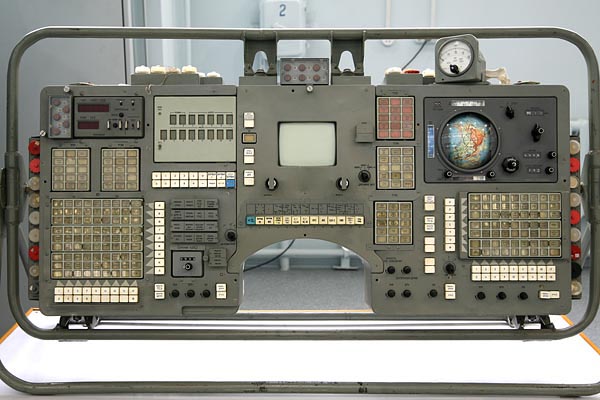
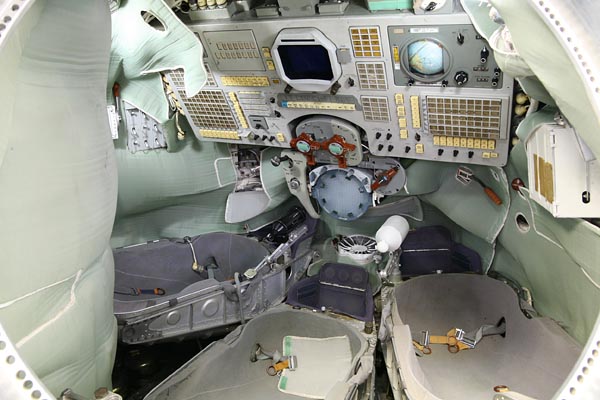
Front panel of descent module (new exhibition)
2007-04 (C) Seiji Yoshimoto
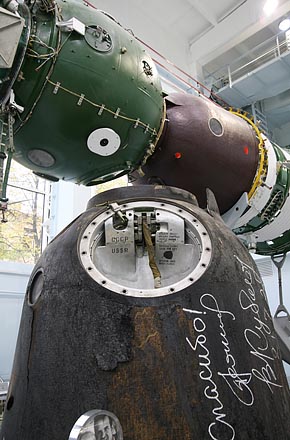
Descent module of Soyuz-19
2006-10 (C) Seiji Yoshimoto
Soyuz Spacecraft
Descent module of Voskhod-1 three-man spacecraft (Launch: 12 October, 1964)
2007-03 (C) Seiji Yoshimoto
Descent module of Voskhod-2 from which Alexey Leonov pioneered extravehicular activity
(Launch: 18 Mar 1965)
2006-10 (C) Seiji Yoshimoto
Voskhod-3 Spacecraft
2006-10 (C) Seiji Yoshimoto
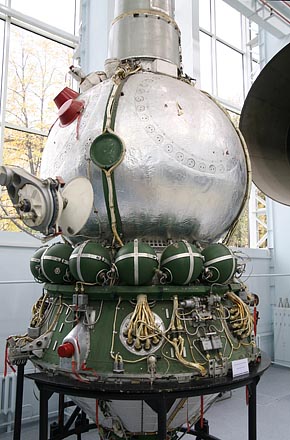
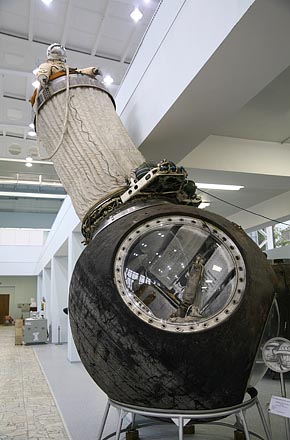
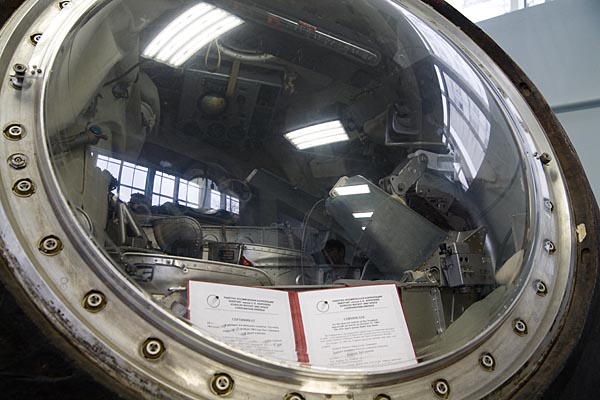
RSC Energia's "Word's Firsts in Mannd Space Flight"
Courtesy of RSC Energia
1961 - First manned flight into space, the mission of Yuri Gagarin on-board Vostok spacecraft
1962 - First "formation flying" in space of two manned spacecraft, Vostok-3 and Vostok-4
1963 - First woman in space, the mission of Valentina Tereshkova on-board Vostok-6
Manned Spacecraft
There are several manned spacecraft exhibitions on the first floor of the exhibition hall. Real descent module of Vostok -1, the world's first manned flight by Yuri Gagarin and other descent modules with significant historical values can be seen only here.
1965 - First space walk - Alexei Leonov was the first person to leave a spacecraft and float in space
1967 - First automatic docking and undocking of two unmanned spacecraft
1969 - First docking of manned spacecraft (Soyuz-4 and Soyuz-5), and crew transfer from one spacecraft to the other through open space.
1969 - First formation flying of three manned spacecraft, Soyuz-6, Souyz-7 and Soyuz-8, during which they maneuvered relative to each other, with ground facilities providing simultaneous support for the three spacecraft
1971 - Launch of the first long-duration manned space station Salyut
1975 - First on-orbit docking of spacecraft (Soyuz-19 and Apollo) of different countries (USSR and USA)
For real spacesuits of Gagarlin, Tereshkova, and Leonov,
please visit:
Zvezda Museum
YouTube videos:
First woman in space
YouTube videos:
Alexey Leonov - first human in space
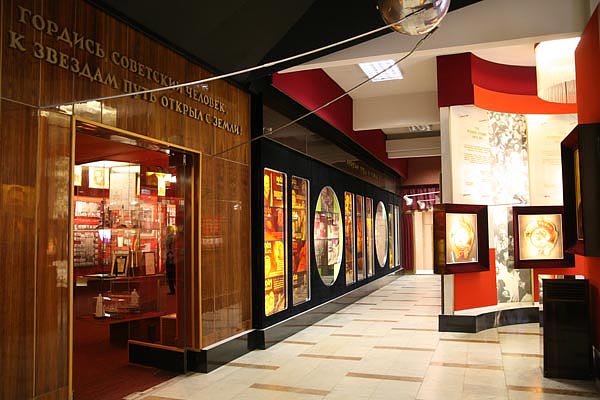
Labour Glory Hall showing early space development history in Soviet era
2006-10 (C) Seiji Yoshimoto
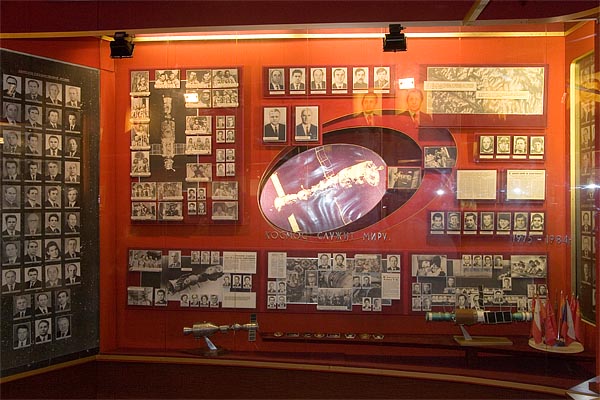
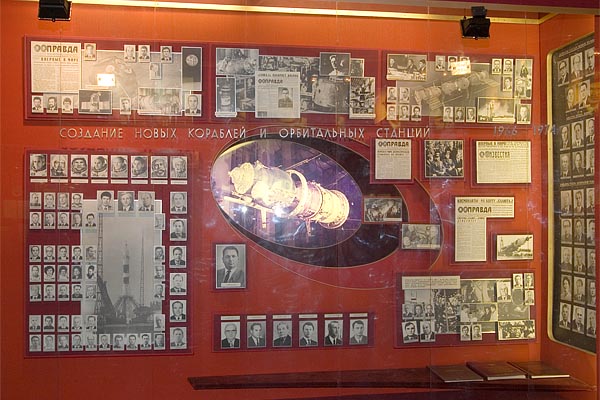
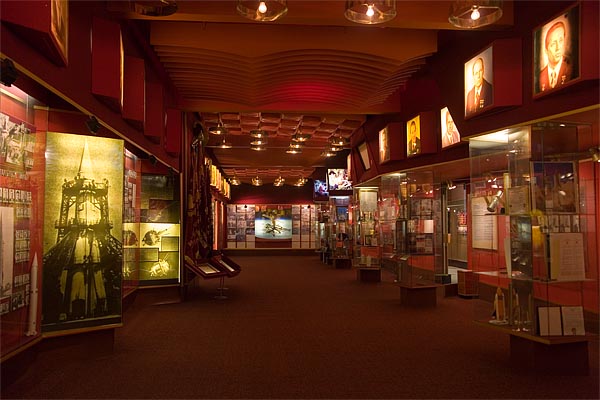
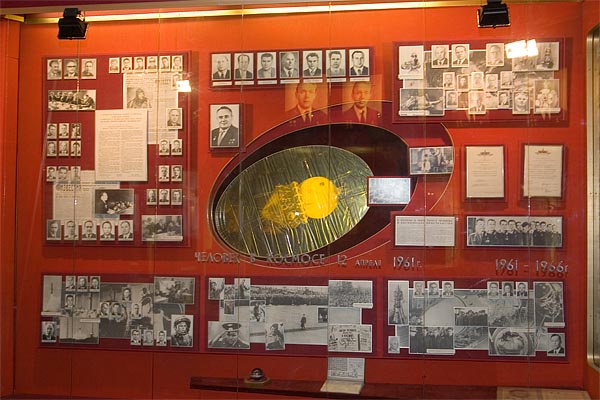
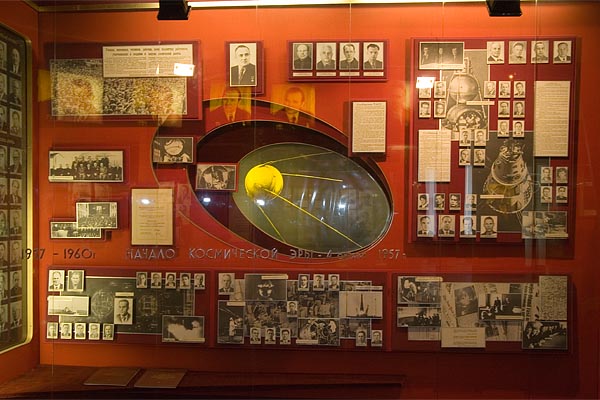
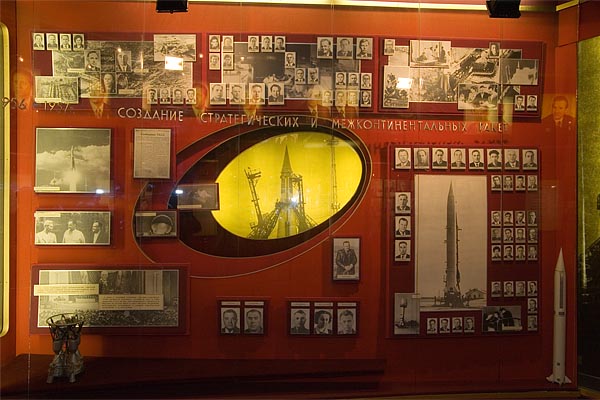
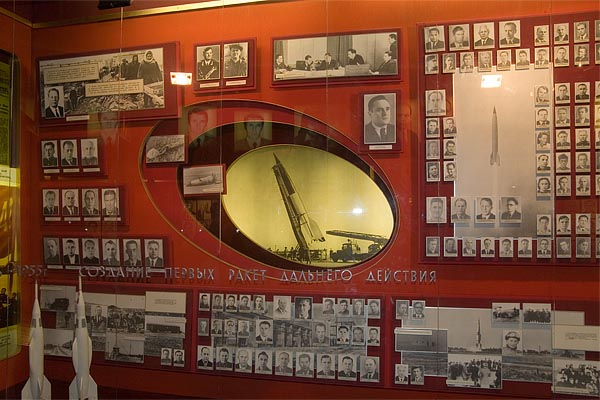
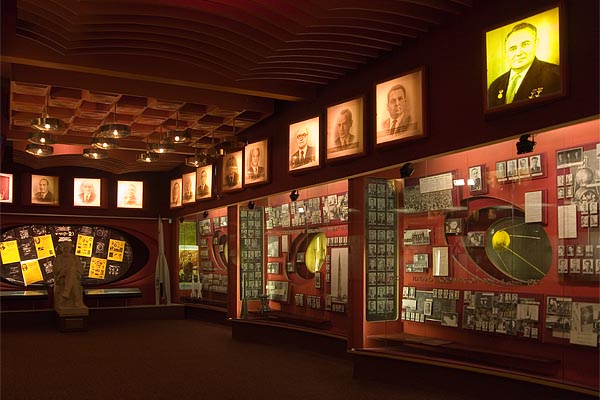
Labour Glory Hall, Energia Museum
2006-10 (C) Seiji Yoshimoto
Labour Glory Hall showing space development history
2006-10 (C) Seiji Yoshimoto
Early space development history in Soviet era (German V-2 to A-4 assembled in Soviet)
2006-10 (C) Seiji Yoshimoto
Early space development history in Soviet era (R-1, R-2, and R-7)
2006-10 (C) Seiji Yoshimoto
Early space development history in Soviet era (Sputnik-1, -2, -3)
2006-10 (C) Seiji Yoshimoto
Early space development history in Soviet era (First manned flight)
2006-10 (C) Seiji Yoshimoto
Early space development history in Soviet era (Soyuaz docking)
2006-10 (C) Seiji Yoshimoto
Early space development history in Soviet era (Salytut orbital station)
2006-10 (C) Seiji Yoshimoto
Labour Glory Hall
shows the history made by those who contributed space development using photographs, documents, awards, memorable souvenirs and others. The history of RSC Energia was the history of early space development of Soviet Union.
Extraction from RSC Energia History Record
Courtesy of RSC Energia
May 3, 1946
Government Decree to establish a series of NII, KB, test organizations, factories to develop, manufacture and test long-range ballistic missiles (LRBM). S.P. Korolev was appointed Chief designer
October 18, 1947
The first successful launch of A-4 rocket assembled using units of German rocket V-2 in the Soviet Union. Flight test of the A-4 rocket were completed in the same year.
October 10, 1948
The first successful launch of Soviet ballistic missile R-1. Flight tests of the first series of R-1 were completed in the same year.
The first ballistic long-range missile R-1 was developed by the Korolev team based on the A-4 rocket in 1948. The R-1 missile was 13.4 tons in mass, had a 270 km range, and a with a payload mass of 1.1 tons.
September 21, 1949
Launch of missile R-2E. Experimental verification of new missile R-2 systems.
May 15, 1957
The first launch of two-stage intercontinental ballistic missile R-7.
August 21, 1957
Successful launch of two-stage intercontinental ballistic missile R-7.
.
October 4, 1957
Launch of the world's first earth artificial satellite (Sputnik-1, 83.6 kg).
November 3, 1957
Launch of the second satellite (Sputnik-2, 508 kg) with a Laika dog aboard.
May 15, 1958
Launch of the third satellite (Sputnik-3, 1327 kg ) by an R-7-type missile with improved power characteristics.
.
April 12, 1961
World first manned flight around the Earth performed by cosmonaut Yuri Gagarin on the Vostok spacecraft.
August 6-7, 1961
Twenty-four hour manned flight around the Earth was first performed by cosmonaut German Titov on the Vostok-2 spacecraft.
January 15, 1969
Docking of Soyuz-4 and Soyuz-5 manned spacecraft. Cosmonauts transfer from one spacecraft to another through open space. Formation of the first experimental orbital station of 12924 kg mass.
June 6-30, 1971
The Soyuz-11 spacecraft that docked to the Salyut orbital station is in orbit. Beginning of the Salyut manned flight (22 days).
December 26, 1974 - February 3, 1977
Flight of the Salyut-4 long-duration orbital station. Two crews worked aboard it.
July 15, 1975
Start of the Soyuz-19 vehicle that docked with the US Apollo vehicle on July 17, 1975. The first experimental flight of the space complex consisting of vehicles of two countries under the Soyuz-Apollo program.
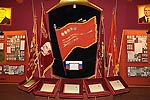
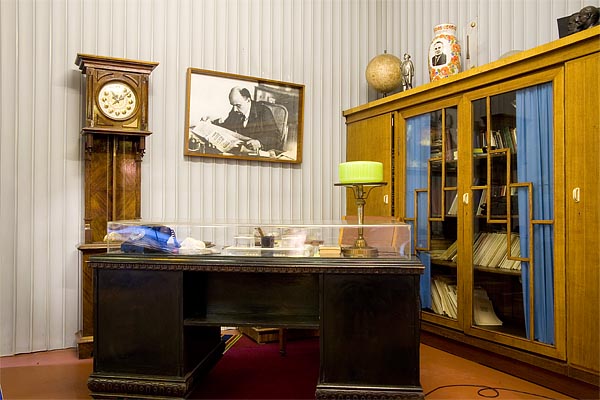
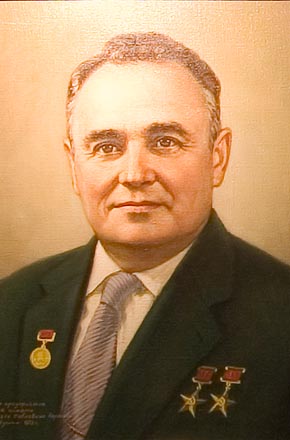
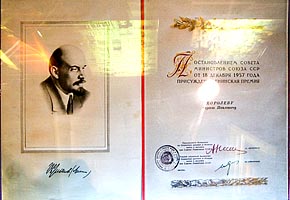
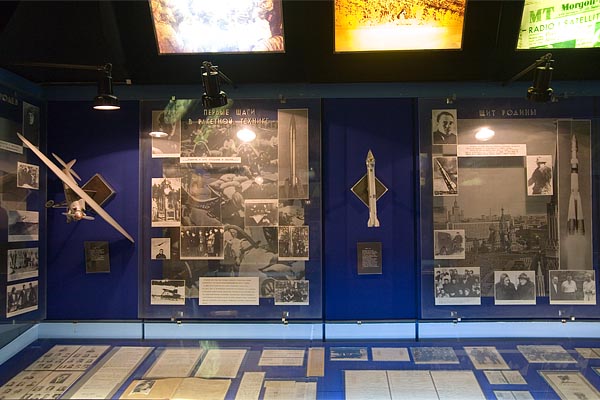
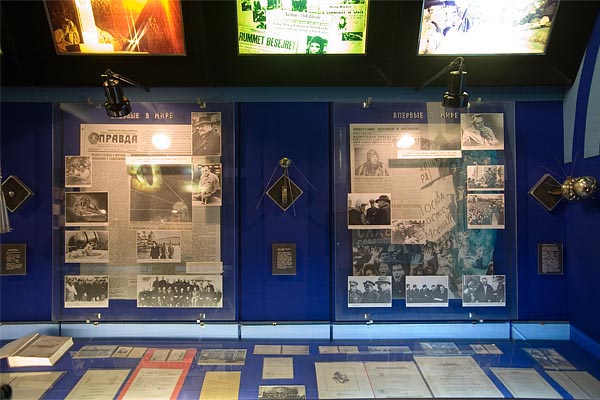
S.P. Korolev
2006-10 (C) Seiji Yoshimoto
Korolev's work study in RSC Energia
2006-10 (C) Seiji Yoshimoto
Korolev's biography
2006-10 (C) Seiji Yoshimoto
Korolev's biography
2006-10 (C) Seiji Yoshimoto
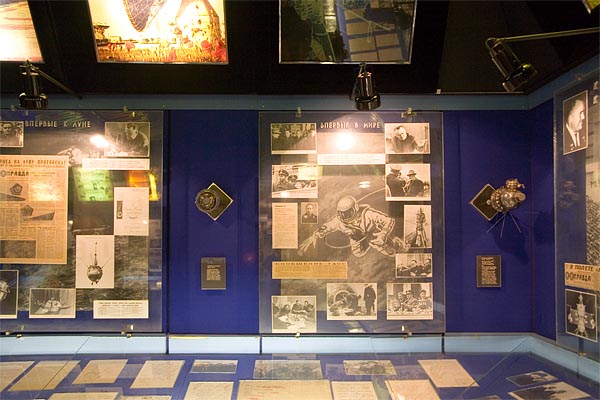
Korolev's biography
2006-10 (C) Seiji Yoshimoto
Lenin Prize to Korolev
2007-03 (C) Seiji Yoshimoto
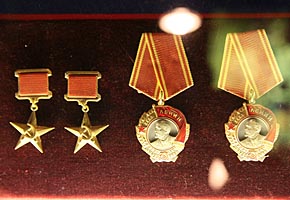
Lenin Prize to Korolev
2006-10 (C) Seiji Yoshimoto
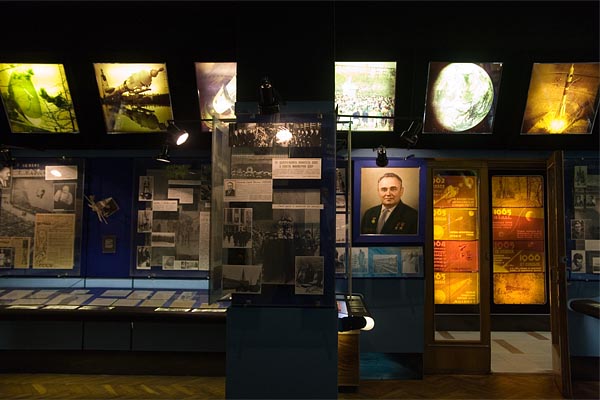
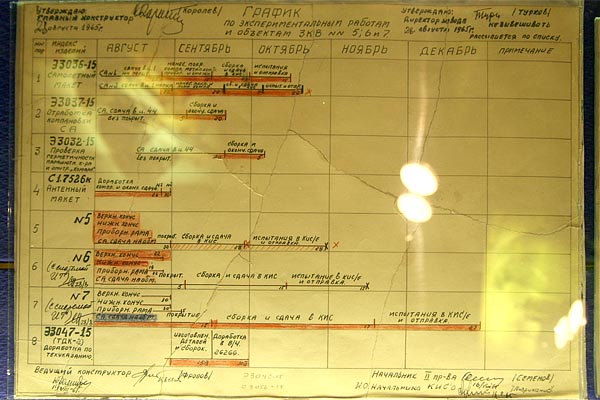
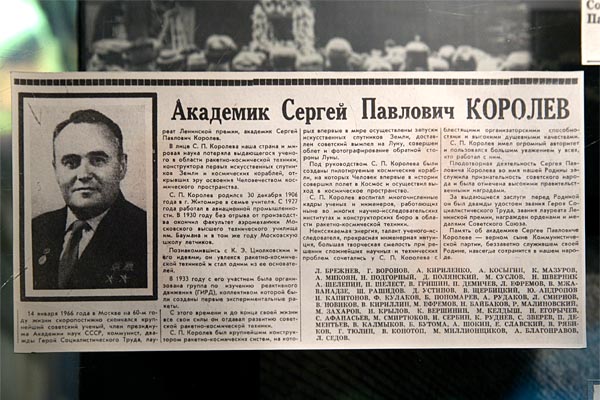
A news Korolev's name was first open to public
2007-03 (C) Seiji Yoshimoto
Korolev's biography
2006-10 (C) Seiji Yoshimoto
Schedule chart by Korolev
2006-10 (C) Seiji Yoshimoto
S.P. Korolev is the Father of space development of Soviet Union. He took the leadership of development of early launch vehicles and satellites including the world's first satellite Sputnik-1and the world's first manned flight by Yuri Gararin. However, he is not well-known to the western world because his name had been kept secret until his death.
Memorial room exhibits his personal belongings, many photographs and documents which are today of significant historical value. His work study in Energia is also reconstructed here.
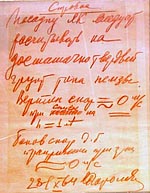
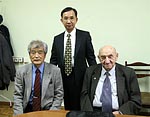
Interview with Mr. Chertok, the legend of Russian space development at RSC Energia.
(Dr. Nobuyuki Tomita, Deputy Chairman of the Board of NPO InterCoS is studying Russian space development history as his life work.)
